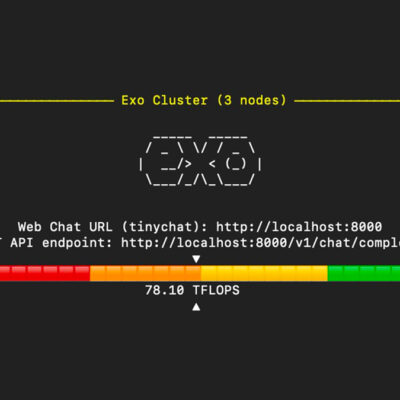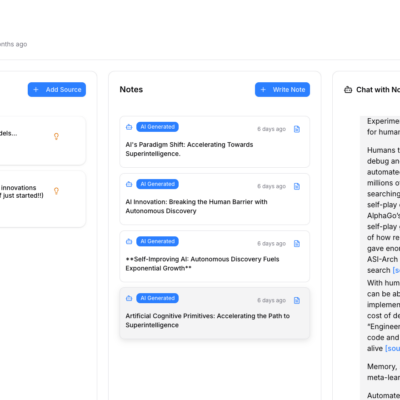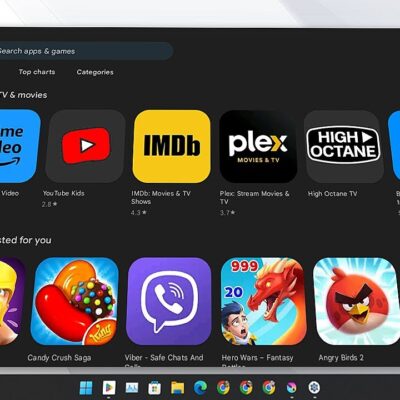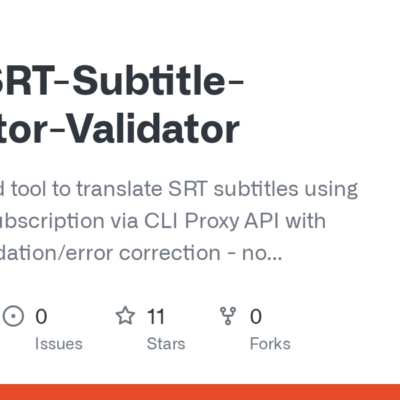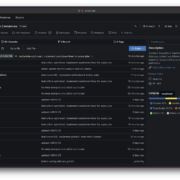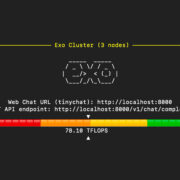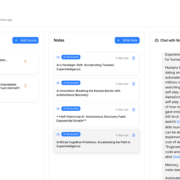ChatGPT has revolutionized how we interact with AI, but its true power lies in personalization. By tailoring conversations to your preferences, profession, and personality, you can unlock a more intuitive, engaging, and efficient AI assistant.
In this guide, I’ll walk you through how I customized ChatGPT to fit my lifestyle—and why it’s a total game-changer.
Why Personalizing ChatGPT Matters
Generic AI responses are useful, but a personalized ChatGPT feels like a digital extension of yourself. Whether you’re a writer, coder, or hobbyist, customization ensures:
- More relevant responses (tailored to your expertise)
- Smoother workflows (AI remembers your preferences)
- Engaging, human-like interactions (with your unique tone and interests)
Let’s dive into how I made ChatGPT mine.
Step 1: Setting Up Custom Instructions
The foundation of personalization starts with Custom Instructions. Here’s how to configure them:
- Go to Settings → Personalization → Custom Instructions
- Tell ChatGPT how to address you – Use your name or a preferred nickname.
- Define your profession – This helps ChatGPT tailor advice (e.g., “freelance writer”).
- Select AI personality traits – Choose from options like witty, encouraging, or technical.
- Add personal details – Hobbies, favorite media, or even pet names (like my cat, Mr. Giggles).
Pro Tip:
The more specific you are, the better ChatGPT adapts. I included my love for Star Trek and jazz—now it suggests episode recommendations and playlists!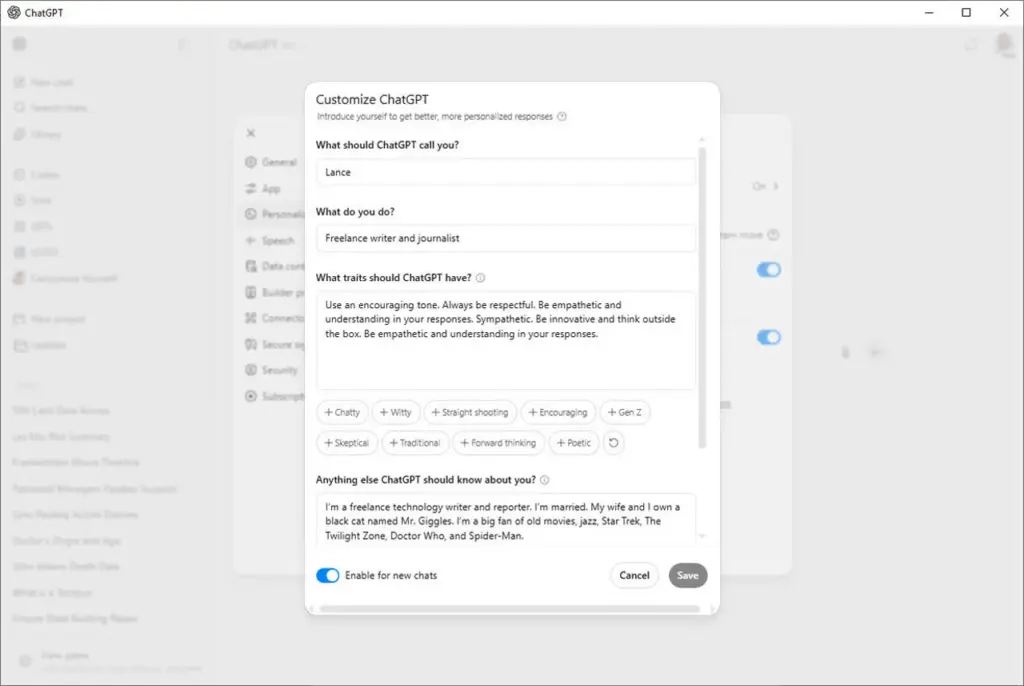
Step 2: Enabling Memory for Smarter Conversations
ChatGPT’s Memory feature ensures continuity across chats. Enable:
- “Reference saved memories” – Uses details from Custom Instructions.
- “Reference chat history” – Pulls context from past discussions.
Example:
When I asked, "Where can I get a chocolate egg cream in NYC?" ChatGPT remembered my location and preferences, listing local spots with a map.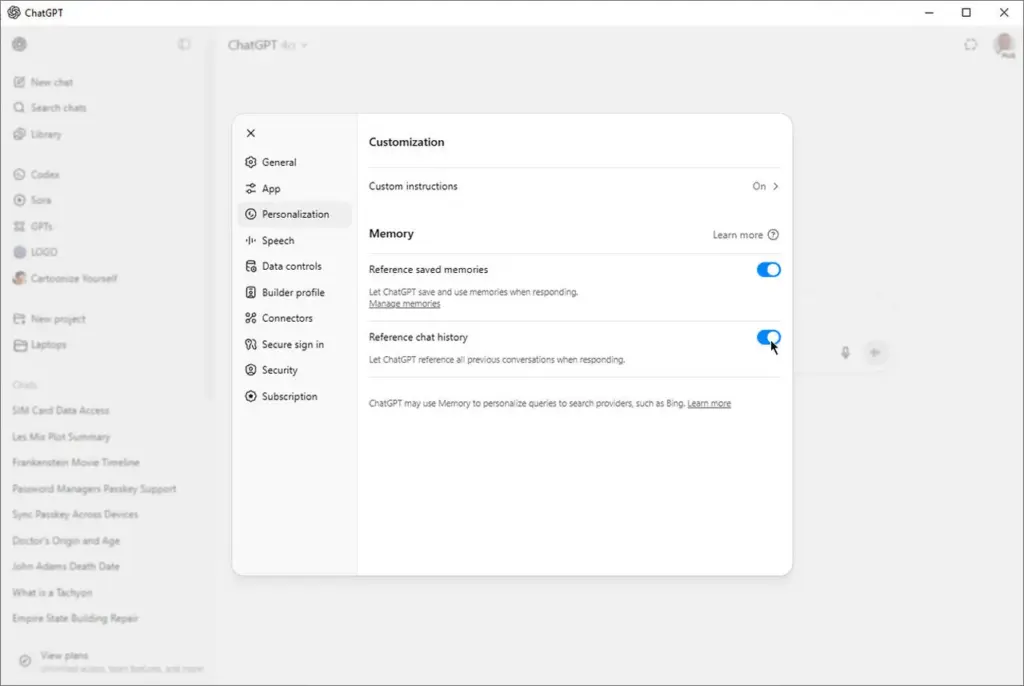
Step 3: Adding Context Mid-Conversation
You’re not limited to initial setup. Drop hints during chats, and ChatGPT saves them:
- “I’m a fan of 1950s sci-fi—can you recommend books?”
- “My favorite coding language is Python.”
Later, it’ll recall these details, making interactions seamless.
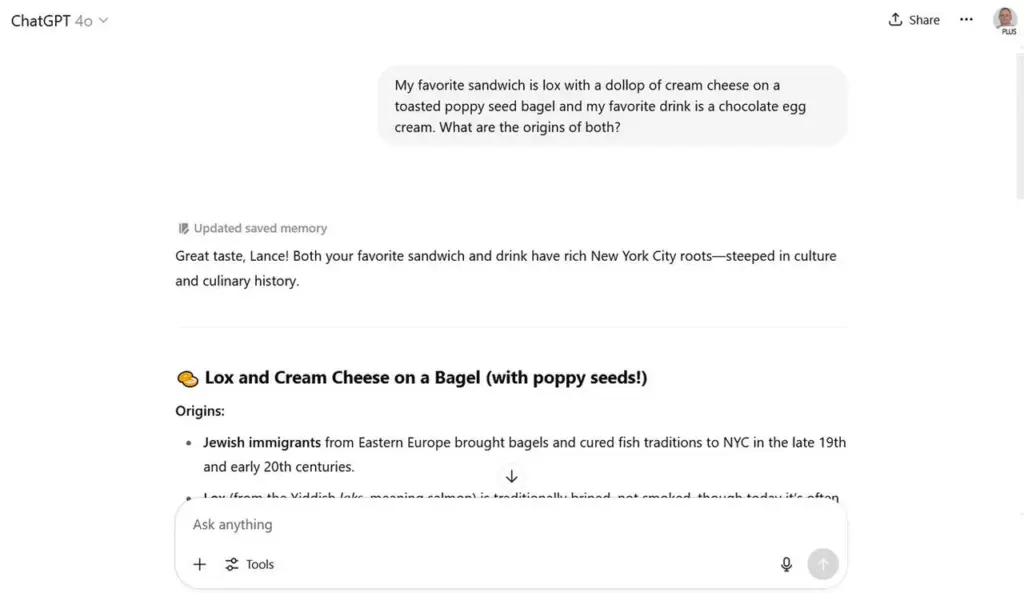
Real-World Benefits: How Personalization Supercharged My Workflow
1. Creative Brainstorming
When I asked for a “sci-fi story involving tachyons,” ChatGPT wove in Doctor Who references and even included my cat, Mr. Giggles, as a character—unprompted!
2. Productivity Boost
As a writer, I often need quick research. Now, ChatGPT pre-filters suggestions based on my niche (tech journalism).
3. Entertainment Tailored to My Tastes
Requesting “jazz playlists” yields Billie Holiday picks, while “best Twilight Zone episodes” surfaces classics I haven’t seen.
Privacy Considerations: What You Should (and Shouldn’t) Share
While personalization enhances ChatGPT, be mindful of privacy:
Safe to share:
- Profession, hobbies, general interests.
- Favorite books/movies (unless personally identifiable).
Avoid sharing:
- Address, financial details, sensitive personal history.
- Anything you wouldn’t post publicly.
OpenAI anonymizes data, but caution is key.
Final Verdict: Is Personalizing ChatGPT Worth It?
Absolutely. By investing 10 minutes in setup, I’ve transformed ChatGPT from a generic tool into a bespoke assistant that:
- Anticipates my needs
- Speaks in my preferred tone
- Delivers hyper-relevant answers
Whether for work or play, a personalized AI experience is the future—and it’s already here.

